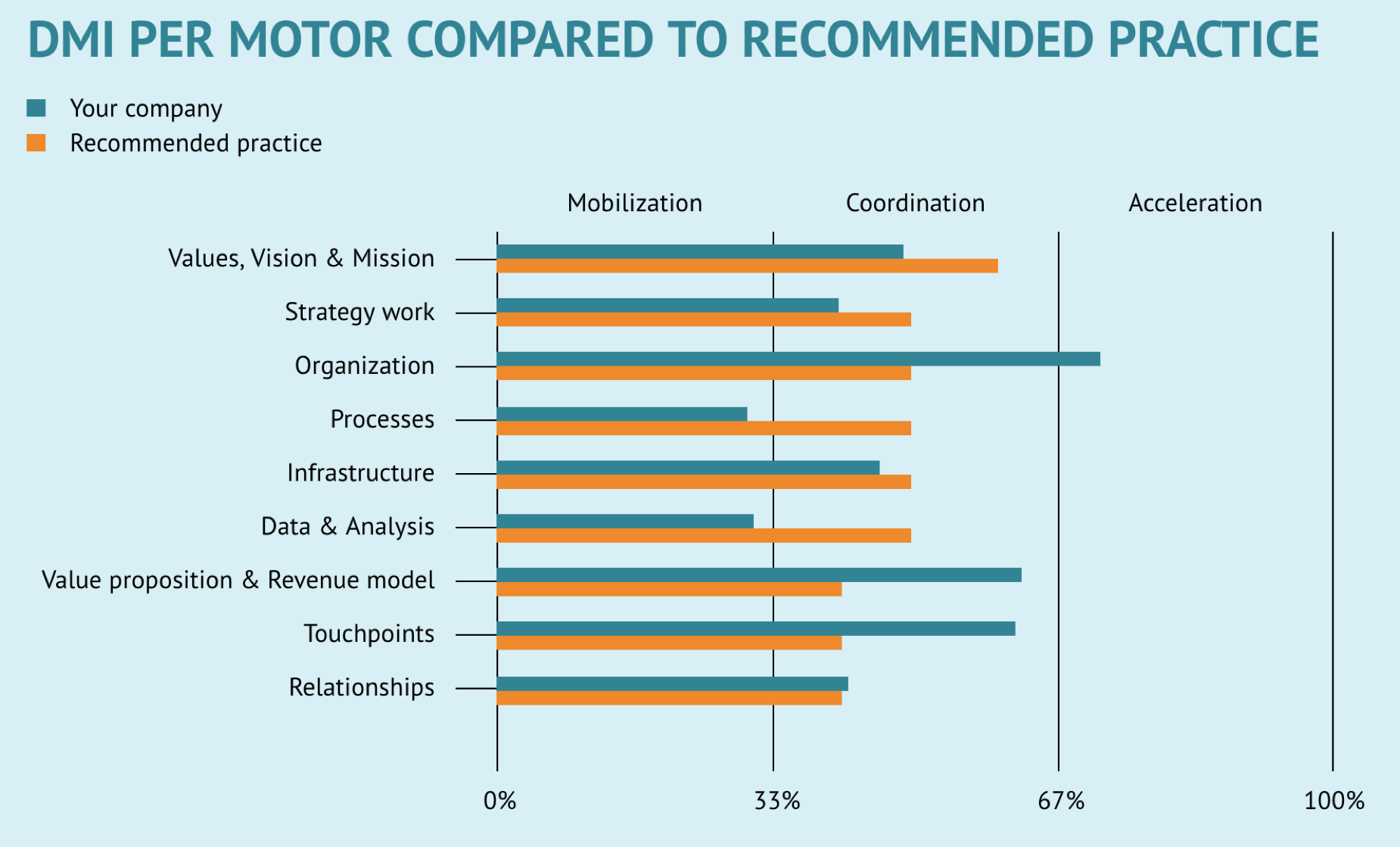Register and get even more out of the maturity test: personalized best practice comparisons and recommendations!

We have just made an update in the terminology of our methodology, Digital Maturity Matrix . Best practice that we describe in, among other things, the book Leading Digital Transformation is renamed Recommended practice. The reason is that many people misunderstood what Best Practice was aiming for. For instance it’s not a benchmark against the best peers in the industry as many believed. Instead it is a comparison based on the methodology Digital Maturity Matrix and the how the digital motors should be developed to make the digital transformation as smooth as possible and with maximized competitiveness.
Recommended practice is a central part of the Digital Maturity Matrix methodology. One of the main aims of the methodology is that it helps companies find out when to do what and how it will happen. This means that the digital motors should be developed in a certain order so that the transformation can be done as smoothly and quickly as possible.
There is of course not only one way to develop the digital maturity of the nine digital motors that work regardless of situation. On the other hand, there is a basic scheme that is a good reference for most businesses. We call it the general recommended practice. This means, for example, that it is an advantage if the motor Values, Vision & Mission is a bit ahead driving the transformation, especially in the early stages (Mobilization phase). In the second phase (Coordination phase), Values, Vision & Mission should still be ahead at the same time as focus should also now increase on how the company works, and for example, motors like Organization and Data & Analysis should be given priority. In the third phase (Acceleration phase), the maturity between the different motors should be evened out.
A general recommended practice practice is adapted in different steps (see 123-127 in the book) to a custom best practice.
When doing the digital maturity test, the result is set in relation to the general recommended practice practice described above. This allows the company to understand whether different motors are located before, after or in phase.